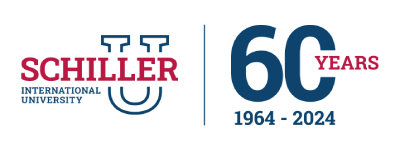For many Indian students, the dream of studying abroad begins with a spreadsheet: tuition figures, visa costs, rent in euros and dollars, and a quiet question at the end: Can I actually afford this? Behind every application are months of saving, planning, and convincing parents that the decision will be worth it. In 2025, as tuition fees rise and the rupee wobbles against the dollar, another question keeps resurfacing: Is the US still worth the cost, or does Europe offer a smarter path forward?
At this point, what matters most is looking closely at the cost of studying abroad, whether in France, Germany, Spain, or the US, not just in money but in lifestyle and opportunity. Comparing the real numbers and understanding these differences instead of wondering can help you make a confident, informed decision about your next step.
Tuition Fees in Europe vs the US
The biggest cost driver in studying abroad, not just for Indian students but all international students, is tuition fees. In the US, higher education remains one of the most expensive in the world. According to the US News, the average annual tuition for international students in 2025 stands at:
- Public universities: $11,371 for 2025-2026
- Private universities: $44,961 for 2025-2026
For a two-year master’s or four-year bachelor’s degree, that translates to well above ₹40 Lakh, excluding visa and living expenses. In contrast, European private universities for Indian students present a very different picture:
|
Country |
Average tuition |
|
Germany |
€5,000 to €20,000 per year |
|
France |
€6,000 to €18,000 per year |
|
Spain |
€2,400 to €30,000 per year |
|
US |
€17,000 to €48,000 per year |
This sharp difference makes Europe one of the most affordable study abroad regions in 2026, especially for postgraduate education. Germany leads with its public universities charging only semester fees, while France and Spain combine affordability with globally recognized degrees.
Living Costs are the Everyday Realities for Students
Without careful planning, your living expenses can easily double your budget, and this is where Europe gains another advantage.
|
Country |
Monthly Cost (approx.) |
|
Germany |
€992 |
|
France |
€800 |
|
Spain |
€1,240 |
|
US |
€2,200 |
When you combine tuition and living costs, an Indian student could spend ₹70 lakh–₹1.2 crore per year on a US degree compared to ₹20–₹30 lakh for the same duration in Europe. This difference, influenced by exchange rates and local affordability, makes Germany and Spain some of the most suitable countries for Indian students in 2025.
Scholarships and Support for Indian Students in Europe
Beyond affordability, European nations actively support Indian students through various scholarships and funding options to attract the top talent.
- Germany: Expatrio, German Academic Exchange Service (DAAD), Heinrich Böll Foundation, and Erasmus+ offer generous scholarships that can make a big difference financially. These scholarships make it even easier for Indian students to pursue their studies in Germany. Many private universities are also stepping up by offering scholarships to meritorious students.
- France: The French Ministry of Foreign Affairs offers a variety of amazing scholarships through its French Excellence programs, aimed specifically at Indian students. Programs such as Charpak, Eiffel, Make Our Planet Great Again (MOPGA), and the Raman Charpak Fellowship provide excellent opportunities for undergraduate and postgraduate studies. These scholarships help you immerse yourself in a vibrant academic environment in France.
- Spain: The Spanish government, along with regional universities, provides merit-based financial aid for both bachelor's and master’s degree students, supporting those who demonstrate academic excellence. This initiative aims to encourage international students to pursue higher education without the burden of financial constraints. Indian students can benefit from these opportunities to alleviate tuition costs and invest in their future careers.
These scholarships for Indian students in Europe significantly reduce the overall costs. At the same time, many programs include internships or assistantships, helping students earn while studying in Europe.
Studying in English in Europe
A decade ago, studying in Europe meant learning the local language. In 2025, that is no longer true. Thousands of English-taught programs are now available, particularly at universities in Germany, France, and Spain.
For example, Schiller International University offers fully English-taught degrees in business, international relations, and computer science across campuses in Madrid, Paris, Heidelberg, and Tampa (US).
Students can begin in Europe and transfer to the US, or complete their degree entirely in Europe, combining American academic standards with European affordability.
For Indian students, this flexibility represents one of the biggest advantages of studying in Europe: global exposure without the financial burden prevalent in the US.
What to Know about Visa Policies Before You Apply
For many Indian students applying abroad, visa regulations can make or break their study plans. Beyond tuition and living costs, the ease of securing and maintaining a student visa shapes the entire experience.
Germany
Germany’s student visa process is known for its structure and transparency. Applicants usually need proof of admission, health insurance, and a blocked bank account showing sufficient funds (around €11,904 per year). Students can work up to 120 full days or 240 half days annually while studying. The residence permit is typically straightforward to extend for up to 18 months after graduation to find work.
Recently, a bilateral agreement between India and Germany introduced a Gratis Visa, waiving the usual visa fee for Indian students, a welcome relief for many families.
France
France issues a long-stay student visa (VLS-TS), which doubles as a residence permit. The application process is streamlined through Campus France, and most applications are processed within three to six weeks. Indian students can work up to 964 hours per year (about 20 hours a week). With a French student visa, you can also travel to all the countries that fall under the Schengen Area.
Spain
Spain has modernized its visa and residence permit systems, making it one of the easiest European destinations for international students in 2025. With the Long-Term Student Visa for courses over six months, you can engage in part-time work for up to 20 hours per week. Student visas typically require proof of financial means and health insurance. The average processing time is five to seven weeks, and approval rates for Indian applicants have improved steadily over the last three years.
US
The US F-1 visa remains the most sought-after, yet competitive, student visa available. Applicants must show sufficient funding for at least the first year of study and a strong intent to return to India after graduation. Processing times range from four to 10 weeks, depending on the embassy workload. Students can work up to 20 hours a week on campus during their studies. It is also important to note that the visa acceptance rate for Indian students crashed below 46% in July 2025 due to changing policies, which has led many US-bound Indian students to shift their eyes towards Europe.
In 2025, as visa scrutiny tightens in some regions and new agreements make others more accessible, understanding these systems early can save time, money, and stress, helping you plan your study abroad journey with confidence.
Post-Study Work Opportunities in Europe and the US
Choosing where to study is only half the decision. What happens after graduation matters just as much. For many Indian students, the goal is not just earning a degree abroad but gaining the international work experience that makes that degree truly valuable. Post-study work policies can shape your return on investment, your career start, and even your confidence in settling abroad.
|
Country |
Approximately Stay Back Period |
Highlights for Graduates |
|
Germany |
18 months |
Strong demand for engineers, data analysts, and business graduates. Easier transition from studying to employment. |
|
France |
2 years |
Simplified renewal for master’s students; access to jobs in design, technology, and management sectors. |
|
Spain |
1–2 years |
New graduate residence permits make it easier to stay and gain EU-level experience. |
|
US |
1 year (OPT), up to 3 years for STEM. |
Competitive but rewarding; depends heavily on H-1B visa lottery outcomes. |
Across Europe, post-study extensions are generally more predictable and qualification-based than dependent on employer sponsorship. This flexibility gives you time to explore career options, gain international exposure, or even transition into further study without the pressure of immediate visa deadlines.
In contrast, the US still offers strong professional networks and high-paying roles, but with greater financial and procedural uncertainty for international graduates.
Career Outcomes and Global Employability
The global job market increasingly values international campus experience and adaptability. Indian graduates studying at European universities gain exposure to diverse work environments, language skills, and multinational firms based in the EU.
Meanwhile, American degrees continue to carry prestige but often come with high student debt. Europe offers an equally global but financially sustainable pathway to the same professional outcomes, especially in business, management, technology, and public affairs.
At Schiller International University, you can benefit from cross-border education opportunities: study at multiple campuses across Europe and the US, develop an international network, and graduate with a US-accredited degree. This positions them strongly for global employability without excessive financial pressure.
The Schiller Advantage: American Degrees, European Affordability
If done correctly, choosing where to study abroad does not have to be a trade-off between cost and quality. Schiller International University uniquely combines both:
- American-accredited degrees, recognized worldwide.
- European campuses in Spain, France, and Germany with lower tuition and living costs.
- English-taught programs designed for global careers.
- Transfer flexibility across campuses, including the US (Tampa).
At Schiller, Indian students can study in Europe for less while earning an American degree, which enhances career mobility and confidence.
Start your journey with Schiller. Explore our Madrid, Paris, and Heidelberg campuses in Europe.
FAQs
Q1. What is the average cost of studying in Europe vs. the US for Indian students?
Answer: The overall cost difference between Europe and the US in 2025 is significant.
In the US, international students typically spend between $11,000 and $45,000 (₹40 lakh or more) per year on tuition alone, plus around $2,200 per month on living costs.
In Europe, tuition fees are far lower, ranging from €2,400 to €20,000 per year, depending on the country and institution. Monthly living costs average between €800 and €1,200, which is far more manageable.
Q2. Are European degrees recognized worldwide like US degrees?
Answer: Yes. Degrees from accredited European universities are internationally recognized and highly respected. Many European institutions follow the Bologna Process, which ensures global academic comparability and credibility.
At Schiller International University, we offer US-accredited degrees on European campuses, providing students with the same recognition as studying in America, with the added benefits of European affordability and exposure.
Q3. Which European country is the most affordable for Indian students?
Answer: Among the major study destinations:
- Germany is the most affordable, offering strong post-study work opportunities.
- Spain follows closely, offering low tuition costs and relatively inexpensive living expenses.
- France is slightly higher in cost but offers generous scholarships such as Charpak, Eiffel, and MOPGA, which significantly reduce their financial burden.
Overall, Germany and Spain stand out as the best-value countries for Indian students in 2025.
Q4. Do European universities offer English-taught programs?
Answer: Absolutely. Most European universities now offer thousands of English-taught bachelor’s and master’s programs, particularly in fields like business, technology, and international relations.
At Schiller International University, all our degree programs are taught in English, allowing Indian students to study in Germany, France, or Spain without the need to learn a new language.
Q5. How can Schiller International University help Indian students balance cost and quality of education?
Answer: Schiller International University offers American-accredited degrees at European affordability.
- Campuses in Madrid, Paris, and Heidelberg will allow you to experience diverse European cultures while saving significantly on tuition and living costs.
- All programs are taught in English and designed for global employability.
- You can transfer between European and US campuses (Tampa), gaining international exposure without paying full US tuition rates.

 Request information
Request information









